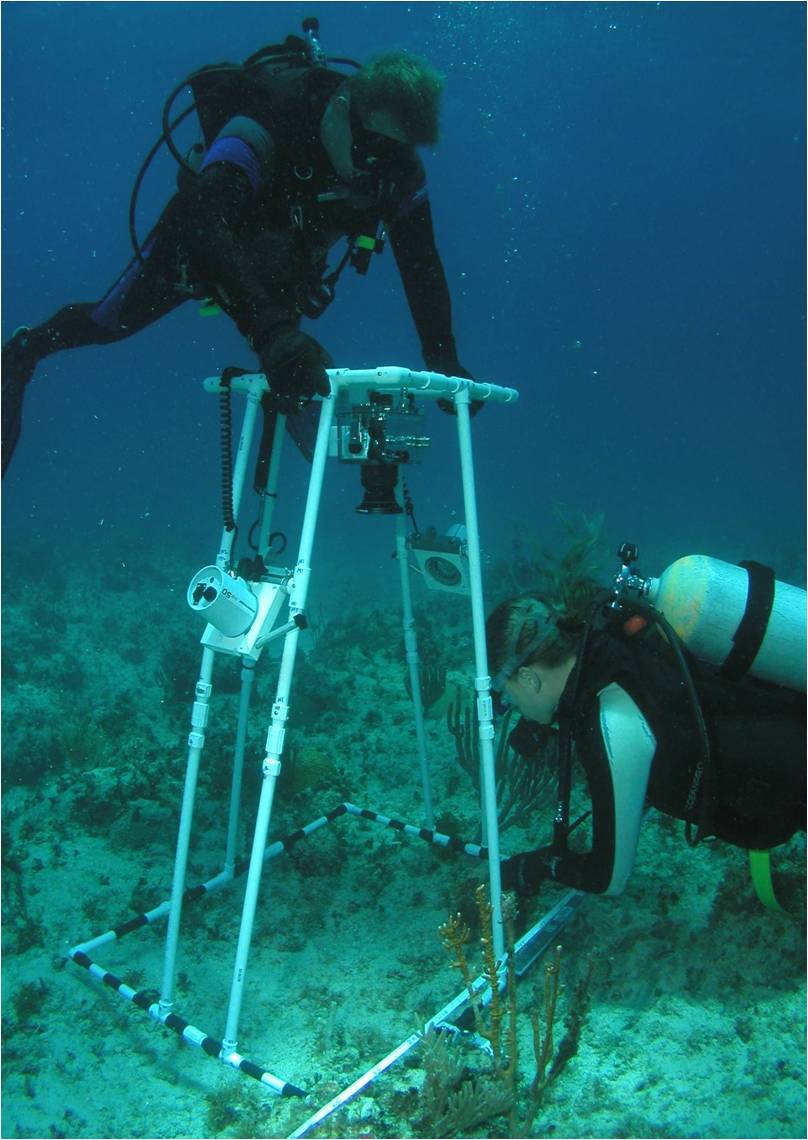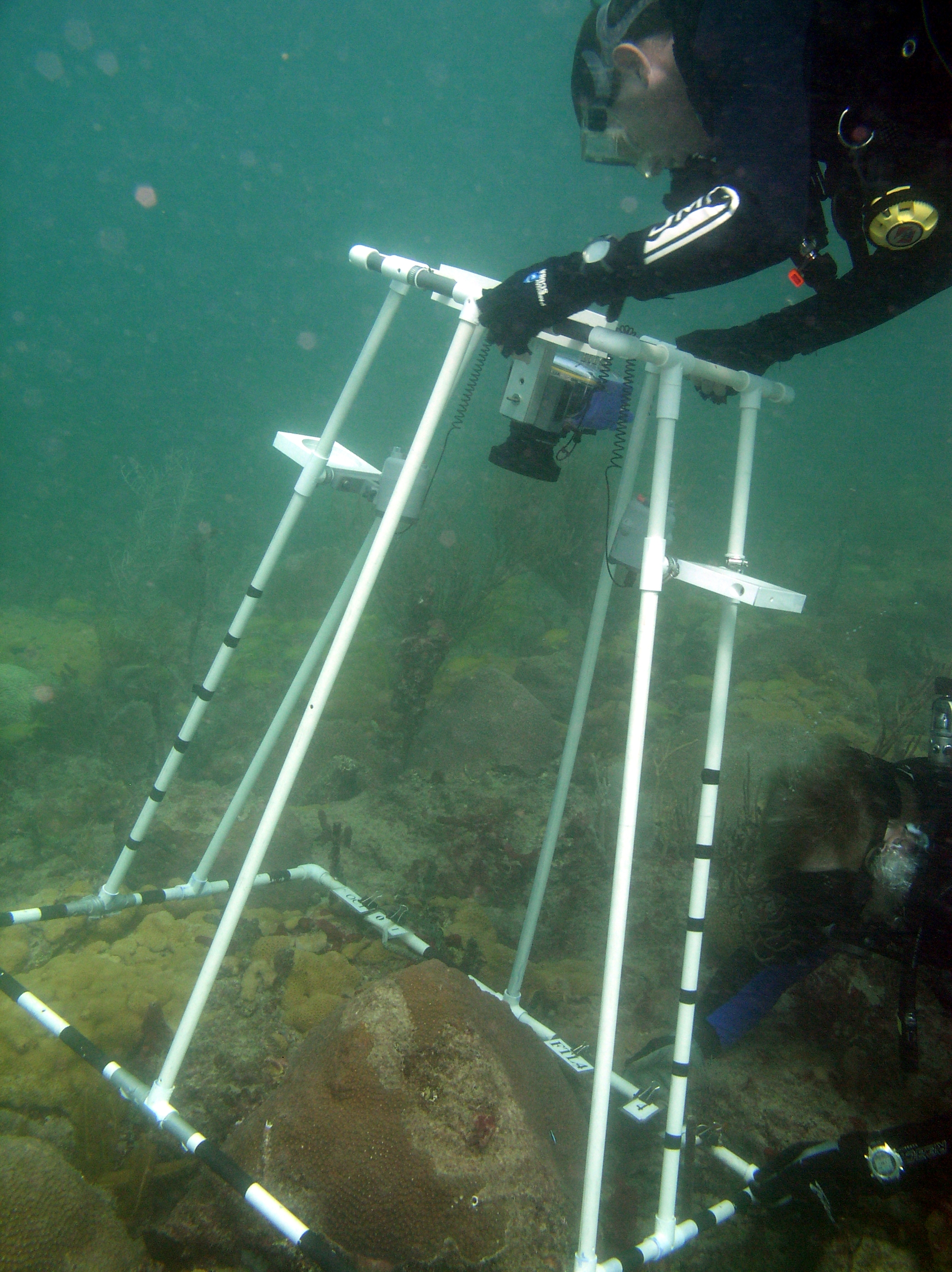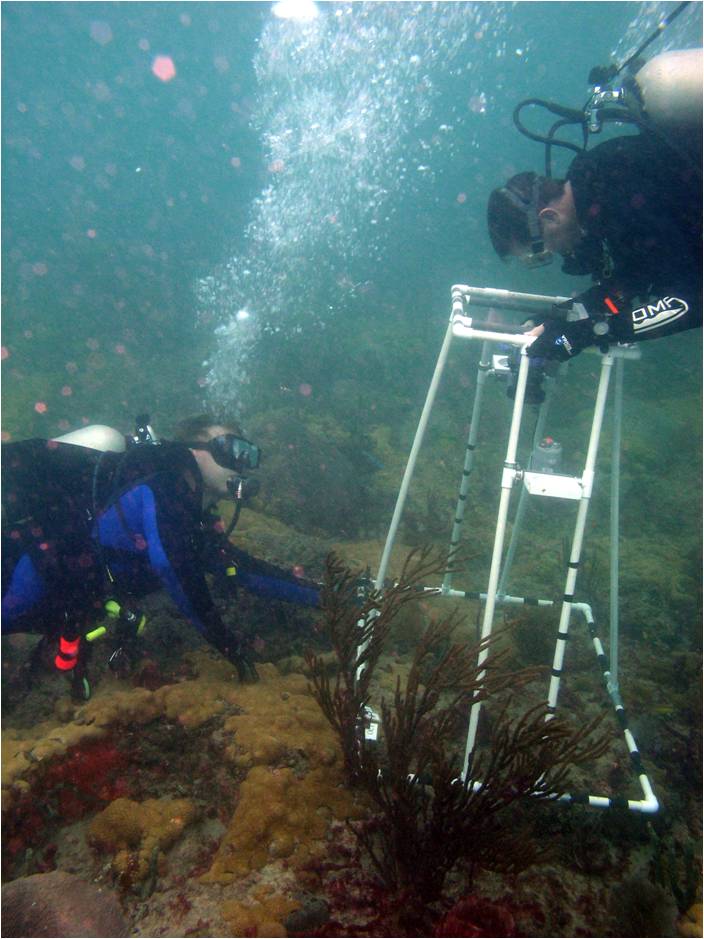Underwater Camera framers
Tool-less, diver-friendly camera systems (2003-2005):
Scientists employ a sampling methodology known as ‘belt transects’ that use underwater cameras with wide angle lenses held at fixed distances above coral reef substrate. Fixed camera height along with repeatable framer positioning along a transect allow individual images to be stitched together, creating a cumulative photographic collection of a reef site. The photographs are analyzed with computer software to determine parameters such as coral coverage, species diversity, and species abundance.
The onset of digital photography brought an endless combination of new cameras and housings for underwater use. The challenge was to find the right combination of cameras, lighting and housings, and them mount them in a way that required no tools. Expedited adjustment and minimal gear carried by divers saved on air consumption and maximized diver bottom time.
Depending on framer height, fields of view ranged from 0.1875m2 to 0.75m2. Some designs were also capable of being broken down into duffle bags for travel and use in remote locations.







